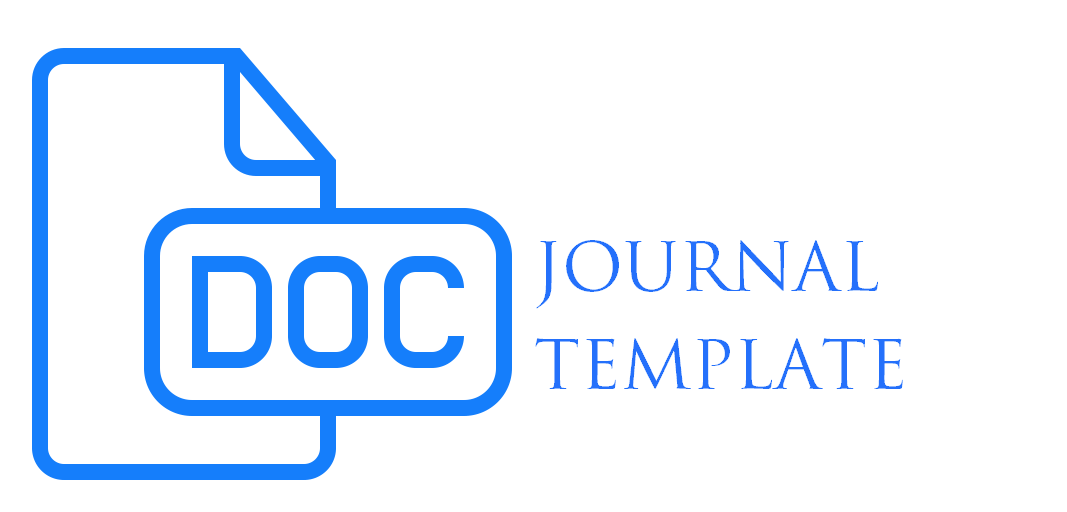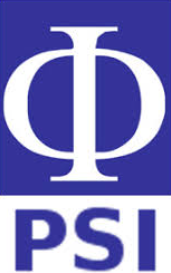PENGEMBANGAN MEDIA PEMBELAJARAN BERBASIS ADOBE FLASH UNTUK MATA KULIAH FISIKA MODERN MATERI RADIASI BENDA HITAM
(1) Jurusan Fisika FMIPA Universitas Negeri Makassar Jl. Daeng Tata Raya Parangtambung, Makassar
(*) Corresponding Author
DOI: https://doi.org/10.35580/jspf.v11i1.1467
Abstract
The aims of this research was to produce instructional media by means of adobe flash for topic on blackbody radiation in modern physics lectures, which could assist students in understanding the topic. Also, the learning media product could encourage the students’ motivation to learn the topic. Method used in this research was Research and Development (R&D) method which refers to Research and Development model developed by Borg and Gall, that consist of 10 steps, i.e.: (1) research and information collecting, (2) planning, (3) develop preliminary form of product, (4) preliminary field testing, (5) main product revision, (6) main field testing, (7) operational product revision, (8) operational field testing, (9) final product revision, and (10) dissemination and distribution. In this research, the Borg and Gall’s model was adapted by limiting the steps only until the eighth step, i.e. operational testing. Experts evaluation to this media showed that of the four aspects should be fulfilled by computer based learning media, i.e. learning aspect, contents aspect, programming aspect, and visual aspect, averagely of the four aspects values was of 3,58. It indicated that the validity of the product was in very high validity category. Based on the result of operational field testing, it was concluded that the use of the learning media could assist students in understanding the subject on blackbody radiation. It could be seen from the results of the test of students’ understanding for subject on blackbody radiation which showed that the percentage of students’ understanding that rely on very good and good categories was of 81,36%. The remains, that is of 18,64% rely on enough category of understanding, and there are no students who have category understanding rely on lack or very lack at all. In addition, the results of students’ motivation surveys after they used the learning media showed that the percentage of students who have motivation which rely on very high and high category was of 94,73%, and 5,26% students who have motivation which rely on enough category. There are no students at all who have motivation which rely on low or very low category. This results indicated that the learning media could encourage students’ motivation to learn the topic of Blackbody radiation.
Abstrak: Pengembangan Media Pembelajaran Berbasis Adobe Flash untuk Mata Kuliah Fisika Modern Materi Radiasi Benda Hitam. Penelitian ini bertujuan untuk menghasilkan produk media pembelajaran berbasis adobe flash untuk mata kuliah fisika modern topik radiasi benda hitam yang dapat membantu mahasiswa memahami materi tersebut. Di samping itu, produk media pembelajaran yang dihasilkan dapat memberi motivasi kepada mahasiswa untuk mempelajari materi tersebut. Metode yang digunakan dalam penelitian ini adalah metode penelitian dan pengembangan (Research and Development, R&D) yang mengacu pada model penelitian dan pengembangan Borg dan Gall yang terdiri atas 10 tahap yaitu: (1) tahap penelitian dan pengumpulan data awal, (2) tahap perencanaan, (3) tahap pembuatan produk awal, (4) tahap ujicoba awal, (5) tahap perbaikan produk awal, (6) tahap ujicoba lapangan, (7) tahap perbaikan produk operasional, (8) tahap ujicoba operasional, (9) tahap perbaikan produk akhir, dan (10) tahap diseminasi. Dalam penelitian ini, model penelitian dan pengembangan Borg dan Gall diadaptasi dengan membatasi tahapan penelitian hanya sampai pada tahap kedelapan, yaitu tahap ujicoba operasional. Hasil evaluasi pakar terhadap produk media yang dihasilkan menunjukkan bahwa dari keempat aspek yang harus dipenuhi oleh sebuah media pembelajaran berbasis komputer, yaitu aspek pembelajaran, aspek isi, aspek pemrograman, dan aspek tampilan, secara rata-rata keseluruhan aspek memiliki nilai sebesar 3,58. Ini menunjukkan bahwa validitas produk media yang dihasilkan berada dalam kategori sangat valid. Berdasarkan hasil ujicoba operasional, diperoleh bahwa penggunaan media pembelajaran ini dapat membantu mahasiswa memahami materi tentang radiasi benda hitam. Hal ini tampak pada hasil tes pemahaman materi mahasiswa dimana persentase jumlah mahasiswa yang memiliki tingkat pemahaman yang berada dalam kategori sangat baik dan baik adalah sebesar 81,36%. Sisanya, sebesar 18,64% berada dalam kategori tingkat pemahaman yang cukup, dan tidak terdapat sama sekali mahasiswa yang memiliki tingkat pemahaman dalam kategori kurang atau sangat kurang. Di samping itu, hasil survei motivasi mahasiswa setelah menggunakan media pembelajaran ini menunjukkan bahwa persentase jumlah mahasiswa yang memiliki kategori tingkat motivasi sangat tinggi dan tinggi adalah sebesar 94,73%, dan 5,26% yang memiliki tingkat motivasi yang sedang. Sama sekali tidak terdapat mahasiswa yang memiliki tingkat motivasi dalam kategori rendah atau sangat rendah. Hal ini menunjukkan bahwa produk media pembelajaran ini dapat memotivasi mahasiswa untuk mempelajari materi radiasi benda hitam..
Kata Kunci: adobe flash, ARCS, Borg and Gall, media pembelajaran, motivasi
Full Text:
PDFReferences
Abdullah, S., Adilah Shariff. 2008. The Effect of Inquiry-Based Computer Simulation with Cooperative Learning on Scientific Thinking and Conceptual Understanding of Gas Laws. Eurasia Journal of Mathematics, Sciences and Technology Education. Hal: 387-398.
Adegoke, B. A. 2011. Effect of Multimedia Instruction on Senior Secondary School Students’ Achievement in Physics. European Journal of Education Studies 3(3). Ozean Publication. 537 – 550.
Astuti, Dwi. 2006. Teknik Membuat Animasi Profesional Menggunakan Macromedia Flash 8. Yogyakarta: Penerbit Andi.
Bakac, M. 2011. The Effect of Computer Assisted Instruction with Simulation in Science and Physics Activities on the Success of Student: Electric Current. Eurasian J. Phys. Chem. Educ., Jan (Special Issue):34-42, 2011.
Bayrak, B. 2007. To Compare The Effects of Computer Based Learning and The Laboratory Based Learning on Students’ Achievement Regarding Electric Circuits. The Turkish Online Journal of Educational Technology – TOJET January 2007 ISSN: 1303-6521 volume 6 Issue 1 Article 2. P: 15 -24.
Bayrak, C. 2008. Effects of Computer Simulations Programs on University Students’ Achievments in Physics. Turkish Online Journal of Distance
Education-TOJDE October 2008 ISSN 1302-6488 Volume: 9 Number: 4 Article 3: 53– 62.
Gall, M.D., Borg, W. R., Gall, J.P. 1983. Educational Research. An Introduction. USA: Pearson Education, Inc.
Keller, J. 2000. How to Integrate Learner Motivation Planning into Lesson Planning: The ARCS Model Approach. Paper presented at VII Semanario, Santiago, Cuba.
Keller, J. 2010. Motivational Design for Learning and Performance. The ARCS Model Approach. Hal. 227 – 286. New York: Springer.
Knowles, E., Dennis Kerkman. 2007. An Investigation of Students Attitute and Motivation toward Online Learning. Journal of Student Motivation, vol. 2. Hal. 70-80.
Mayer, R. 2009. Multimedia Learning, Prinsip-prinsip, dan Aplikasi (Terjemahan). Surabaya: ITS Press.
Munir. 2008. Kurikulum Berbasis Teknologi Informasi dan Komunikasi. Bandung: Alfabeta.
Nelda, A. 2005. Pembelajaran Berbasis ICT. Online. (http://ilmukomputer.org/ uploads/2008/03/adri_nelda2008.pdf). Diakses tanggal 25 Juni 2010.
Peraturan Akademik Universitas Negeri Makassar. 2009. Makassar: Universitas Negeri Makassar.
Philip, M. K. Et all. 2011. The Effect of Computer-Assisted Instruction on Student’s Attitudes and Achievement in Matrices and Transformations in Secondary Schools in Uasin Gishu District, Kenya. International Journal of Curriculum and Instruction Vol. 1(1), pp. 53 – 62, Departement of Curriculum, Instruction and Educational Media, Moi University.
Shellnut B., et al. 1998. Using the ARCS Model to Design Multimedia College Engineering Courses. Proceeding of Selected Research and Development Presentations at the National Convention of the Association for Educational Communications and Technology (AECT) page: 391-399.
Stelzer, T., et all. Comparing the ecacy of multimedia modules with traditional textbooks for learning introductory physics content. Online (http://arXiv.edu.com/physics.ed-ph/). Diakses tanggal 15 Maret 2010.
Sutopo, Hadi. 2009. Pengembangan Model Pembelajaran Pembuatan Aplikasi Multimedia Khususnya Puzzle Game pada Mata Kuliah Multimedia. Sinopsis Disertasi. Universitas Negeri Jakarta.
Warsita, B. 2008. Teknologi Pembelajaran, Landasan dan Aplikasinya. Jakarta: Rineka
Article Metrics
Abstract view : 2770 times | PDF view : 3460 timesLicense URL: https://creativecommons.org/licenses/by-nc-nd/4.0/
Organized by :
Physics Department
Faculty of Mathematics and Natural Sciences,Universitas Negeri Makassar,
Daeng Tata Raya Street, Parangtambung, Tamalate, South Sulawesi, Indonesia.
Postal Code: 90224 Phone/Fax (0411)840622
Website: http://ojs.unm.ac.id, email: jspf@unm.ac.id

Jurnal Sains dan Pendidikan Fisika (JSPF) is licensed under a creative commons Attribution-NonCommercial-NoDerivatives 4.0 International License










